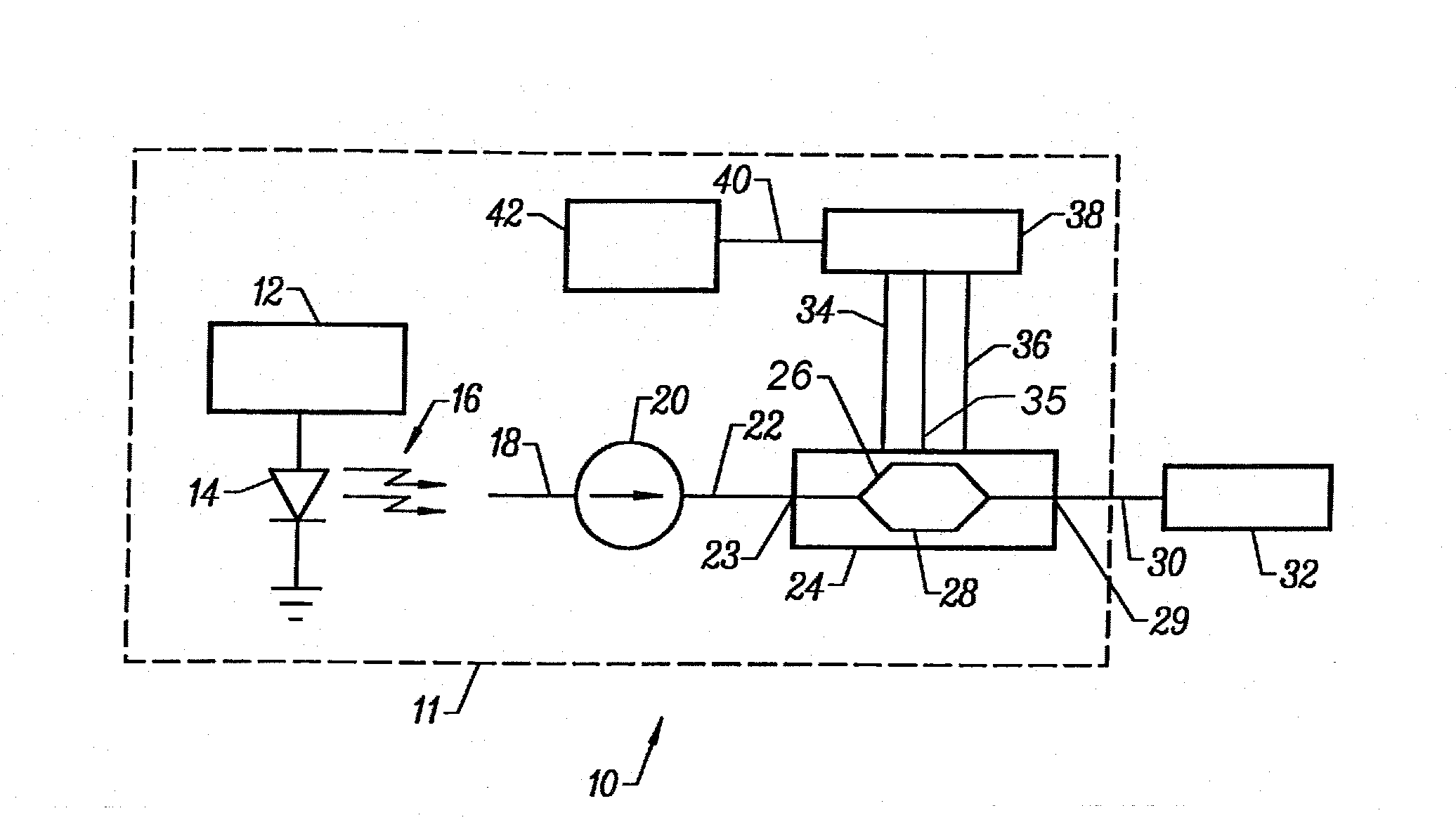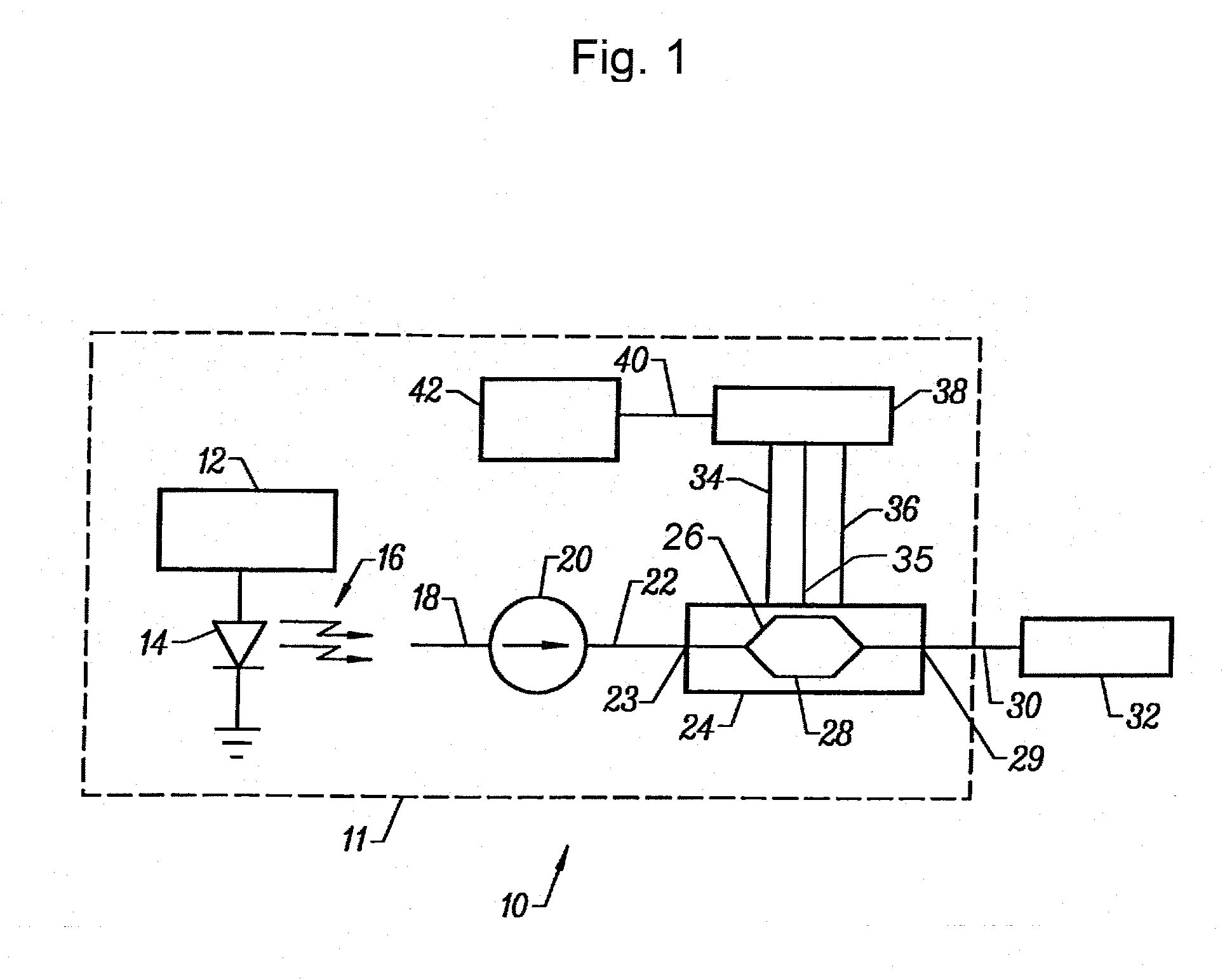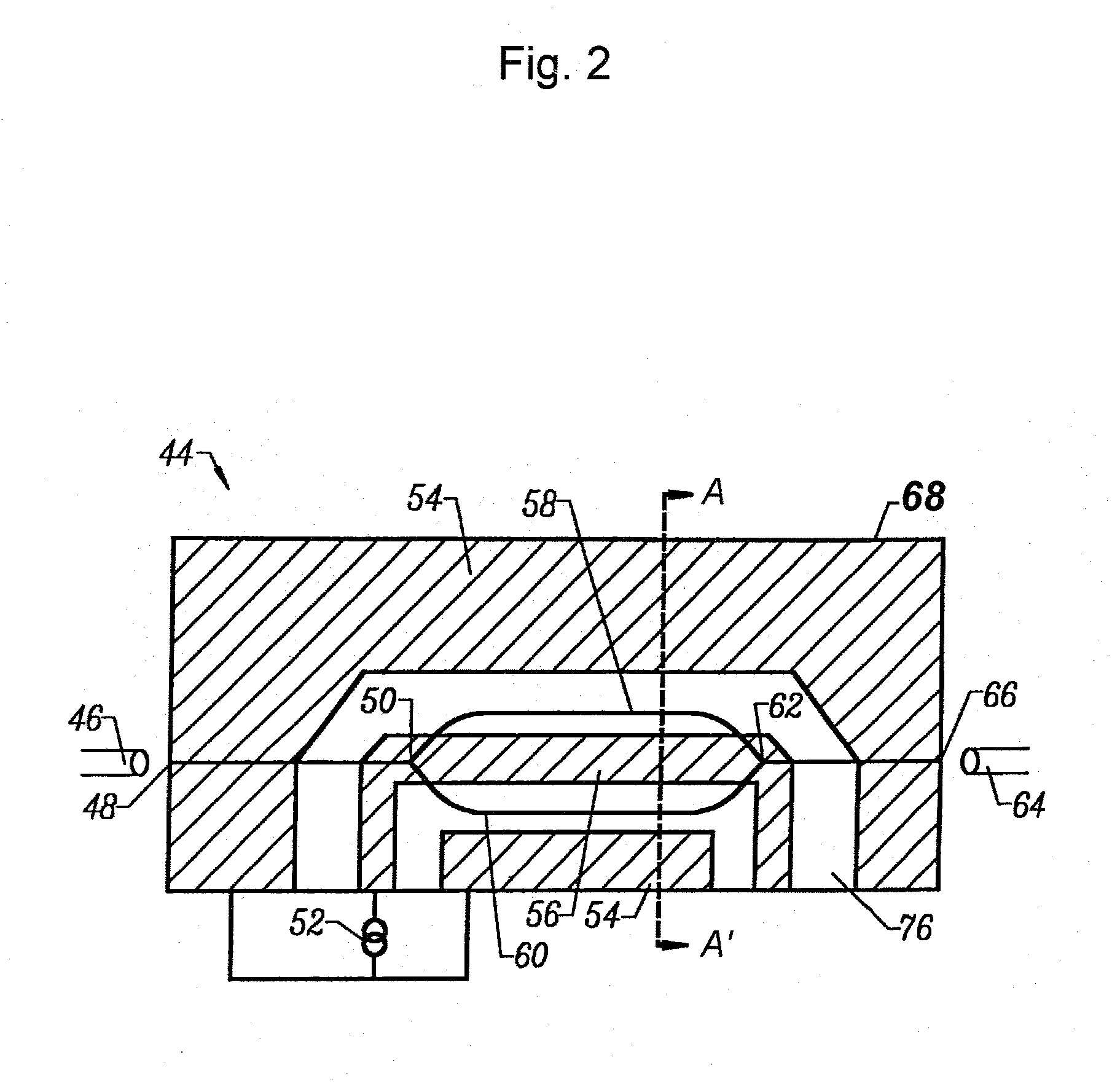Low Bias Drift Modulator With Buffer Layer
a buffer layer and modulator technology, applied in the field of fiberoptic telecommunications optical devices, can solve the problems of weak electric fields loss of transmitted data, etc., and achieve the effects of reducing manufacturing and material costs, reducing substrate charging, and reliable operation
- Summary
- Abstract
- Description
- Claims
- Application Information
AI Technical Summary
Benefits of technology
Problems solved by technology
Method used
Image
Examples
Embodiment Construction
[0075] With reference to FIG. 1, an embodiment of a simplified optical communication system 10 is shown, utilizing a modulator 24 of the present invention. The optical communication system 10 comprises a transmitter 11, a receiver 32 and a transmission medium 30, which connects the transmitter 11 to the receiver 32. The transmission medium 30 is typically an optical fiber.
[0076] The transmitter 11 includes a laser 14, which operates in accordance with laser control signals received from a laser controller 12. The laser 14, which may operate in continuous wave (CW) mode or pulsed mode, produces optical signals 16 having a prescribed wavelength. In long wavelength communications systems, the laser 14 is typically an InGaAsP / InP semiconductor single-mode laser which generates 1.5 micrometer wavelength optical signals.
[0077] A lensed optical fiber 18, or fiber pigtail, receives the optical signals 16. The lensed optical fiber 18 is coupled to the isolator 20, which reduces reflections...
PUM
 Login to View More
Login to View More Abstract
Description
Claims
Application Information
 Login to View More
Login to View More - R&D
- Intellectual Property
- Life Sciences
- Materials
- Tech Scout
- Unparalleled Data Quality
- Higher Quality Content
- 60% Fewer Hallucinations
Browse by: Latest US Patents, China's latest patents, Technical Efficacy Thesaurus, Application Domain, Technology Topic, Popular Technical Reports.
© 2025 PatSnap. All rights reserved.Legal|Privacy policy|Modern Slavery Act Transparency Statement|Sitemap|About US| Contact US: help@patsnap.com



